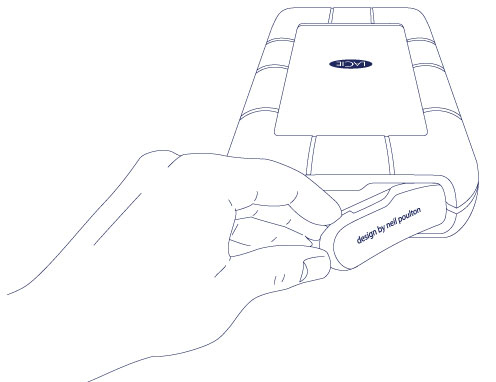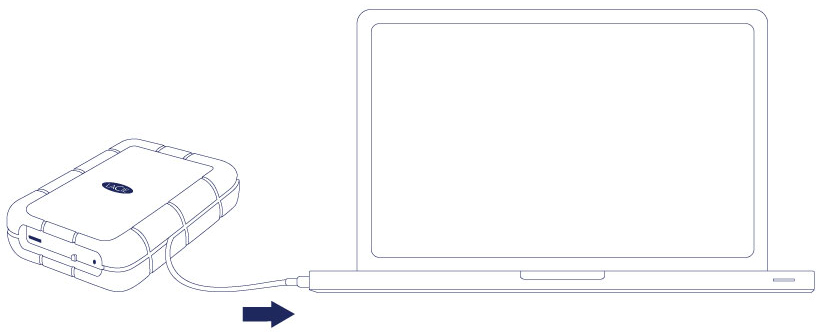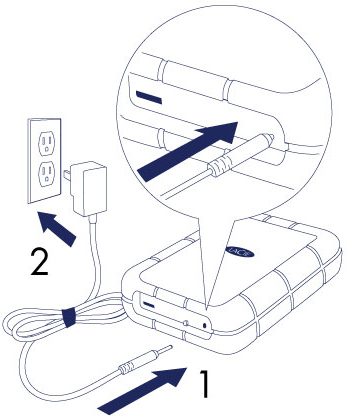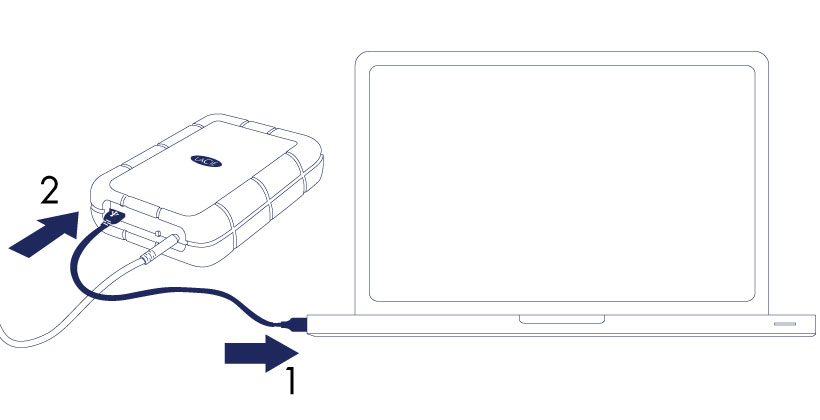User Tools
Site Tools
Table of Contents
Table of Contents
Getting Connected
Setting up the LaCie Rugged RAID is easy thanks to LaCie Setup Assistant. Follow the steps in the order they are given to ensure that your LaCie Rugged RAID’s volume mounts correctly on your computer.
Thunderbolt and Windows
STEP 1 - Connect the interface cable
First connection
Mac: The LaCie Rugged RAID can be connected to your Mac using the integrated Thunderbolt cable or the included USB 3.0 cable. However, it is not possible to use both interfaces at the same time.
Windows: For the initial setup, you must use the USB 3.0 cable. If your PC has a Thunderbolt port, make certain to install the Thunderbolt driver when prompted by LaCie Setup Assistant. Once the driver is installed, you can connect the Rugged RAID to your PC via Thunderbolt.
Thunderbolt
- Gently remove the Thunderbolt connector from the cover.
- The drive mounts on your desktop (Mac).
- Replace the cover on the LaCie Rugged. Doing so maintains the LaCie Rugged’s IP 54 rating.
If the Rugged RAID’s Setup volume does not mount on your computer, see troubleshooting topics at Getting Help.
USB 3.0
-
- The Rugged RAID.
- An active outlet.
-
- A USB 3.0 or USB 2.0 port on your computer.
- The USB port on the Rugged RAID.
- The drive mounts in Computer (Windows 7 or later) or on your desktop (Mac).
If the Rugged RAID’s Setup volume does not mount on your computer, see troubleshooting topics at Getting Help.
The power cable must be connected to an active outlet when using the Rugged RAID’s USB 3.0 port.
Since the cover cannot be replaced when using the USB 3.0 connection, the Rugged RAID’s IP 54 rating is not in effect.
STEP 2 - Launch LaCie Setup Assistant
LaCie Setup Assistant (LSA) must be launched before using your drive. It will allow you to:
- Easily format the hard drive according to your needs
- Copy the User Manual to your computer
- Install software for added features
- Register your LaCie device
Launch LaCie Setup Assistant
Windows users
AutoPlay: Windows AutoPlay may detect your LaCie device as soon as it is connected to your computer. If the AutoPlay window appears, choose Open folder to view files using Windows Explorer and double-click LaCie Setup.
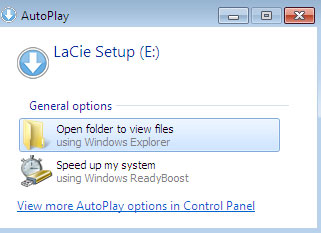
Manual access: Open the LACIE SETUP volume in Computer/This PC and double-click LaCie Setup.
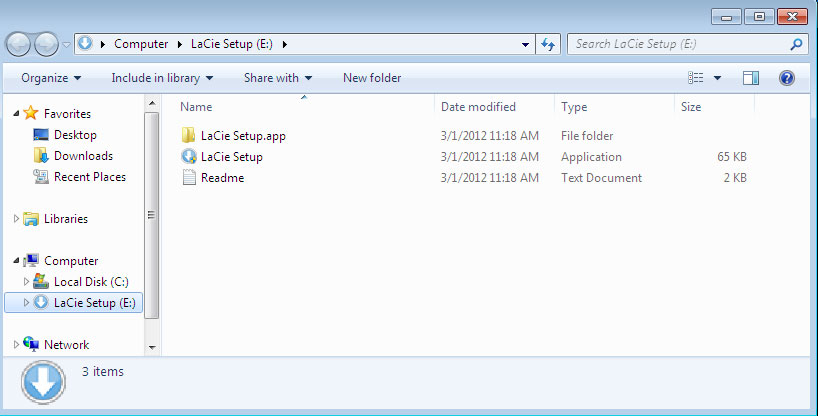
Mac users
Setup
The LaCie Setup Assistant guides you through formatting and registering your hard drive as well as installing LaCie software utilities. Follow the onscreen prompts to complete the setup.
Alternatively, you can use your disk management utility program to format or partition your LaCie drive. See Optional Formatting and Partitioning for details.
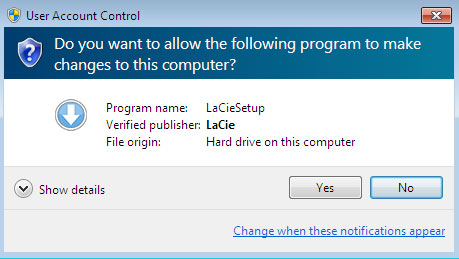
Software will be installed on the product's storage, not on your computer. It will be located on the volume entitled “Compatible” or “LaCie Share” if it exists, otherwise on “LaCie”.
LaCie software utilities may be installed at any time. Once the format is complete, the LaCie Setup Assistant application will be available on:
- LaCie: If you created one partition
- Compatible/LaCie Share: If you created two partitions
If you formatted your drive using a disk utility and you need access to software utilities or the user manual, visit www.lacie.com/support/.
Unmounting the volumes
In order to avoid file system corruption, it is important to unmount your LaCie device’s volume before turning it off or disconnecting the interface cable. See Unmounting Your Hard Drive for details.

 Print page
Print page Save page as PDF
Save page as PDF


